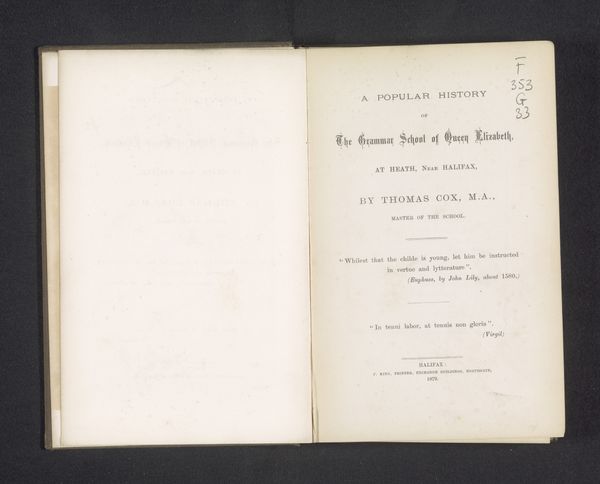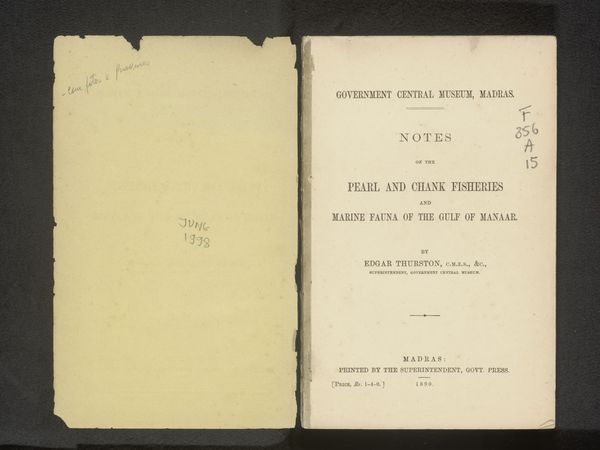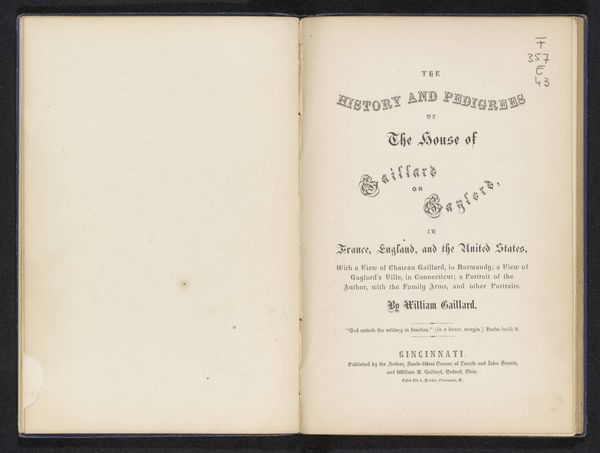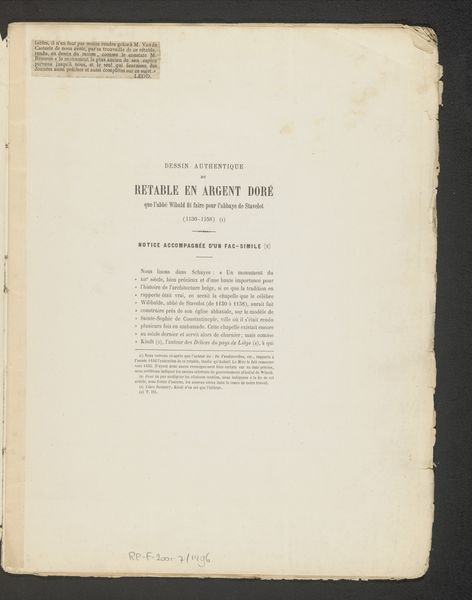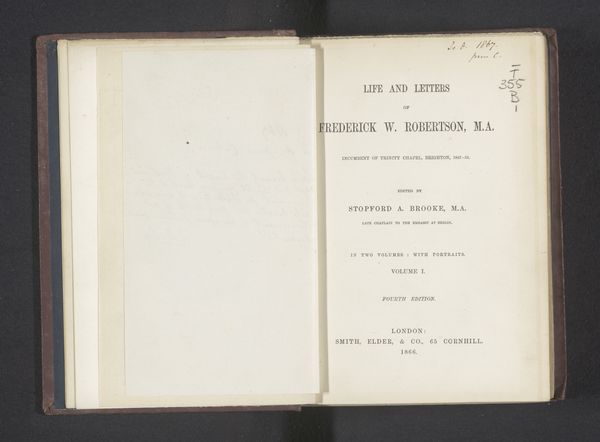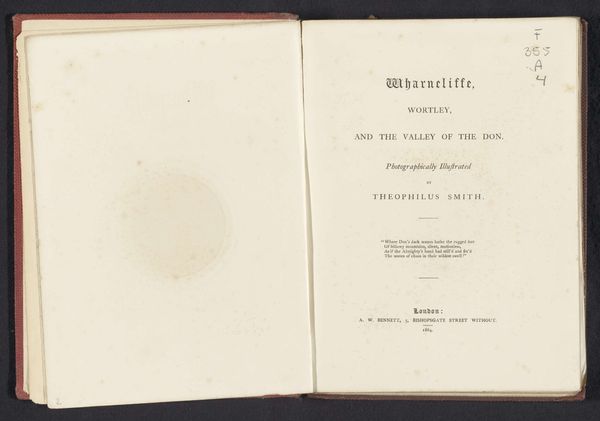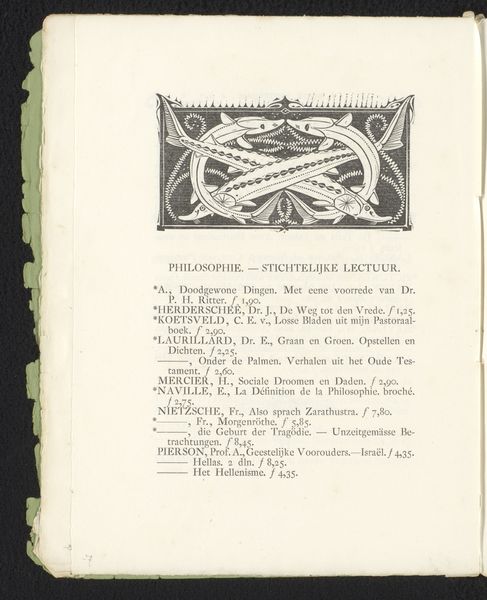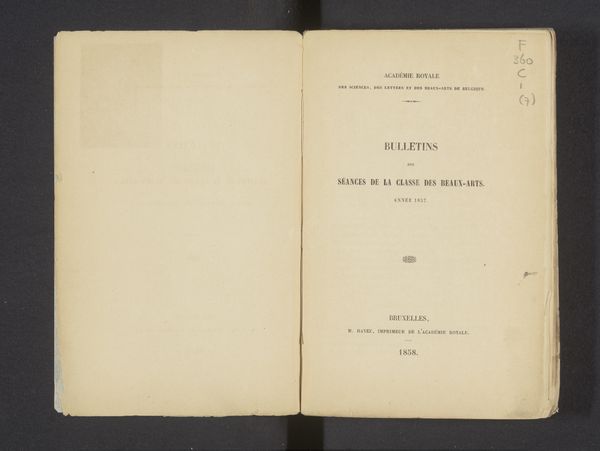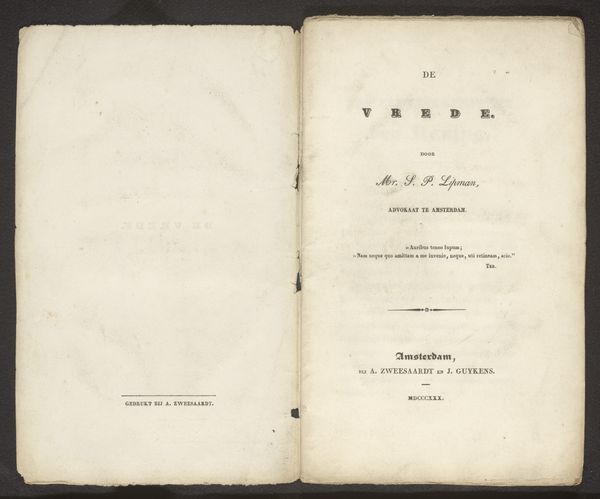
print, photography, albumen-print
#
script typography
#
hand-lettering
# print
#
book
#
hand drawn type
#
hand lettering
#
photography
#
personal sketchbook
#
hand-drawn typeface
#
sketchbook drawing
#
handwritten font
#
sketchbook art
#
albumen-print
#
small lettering
Dimensions: height 285 mm, width 225 mm, thickness 33 mm
Copyright: Rijks Museum: Open Domain
Curator: Here we have Henry William Cave's "The Ruined Cities of Ceylon" from 1897, an albumen print of the book’s title page. Editor: My initial impression is one of faded grandeur, the hand-lettering hinting at a bygone era of exploration and perhaps, colonial romanticism. There's an intentional delicacy at play, almost an elegy in typeface. Curator: Note how the title itself, "The Ruined Cities," dominates the composition, commanding attention through its intricate, almost gothic typeface, setting a tone of decay, but with the promise of visual discovery. The book acts as a mediator, delivering imagery through colonial authority, using ruin to convey exoticism for a Western audience. Editor: Indeed. Observe the script—the flourishes and almost whimsical elements incorporated into the lettering. These artistic details suggest more than just information. They are embellishments, signifiers that aim to imbue a sense of adventure and historical significance into the content of the book. Curator: I agree. And think about the book itself as a cultural object, carefully positioned between the photographer’s vision and its audience’s expectations. It’s not just a travelogue; it's a curated perspective. We should acknowledge the power dynamics inherent to its production and the framing of a narrative of "ruin" during a period of colonial expansion. Editor: Right. It reflects the gaze of empire, shaping how Ceylon is perceived by the outside world. The aesthetics speak of a wistful elegance, concealing—or at least, softening—the realities of colonial power and its impact on local culture and architecture. The very act of documentation through photography implicates Cave and his work in a larger, uneasy, historical project. Curator: Thinking about its impact, it's crucial to realize how such imagery has participated in the construction of colonial perceptions and, by extension, the historical trajectory that we still unpack today. Editor: Yes, engaging with a photograph of this nature necessitates thinking about context. It is about deconstructing the multiple layers, understanding the motives behind representation and then coming to terms with its consequences. Curator: Thank you for providing that insightful perspective. Now I understand it better, from multiple points of view. Editor: I am leaving with the intention to contemplate the nuances of visual representation and power. Thank you.
Comments
No comments
Be the first to comment and join the conversation on the ultimate creative platform.
